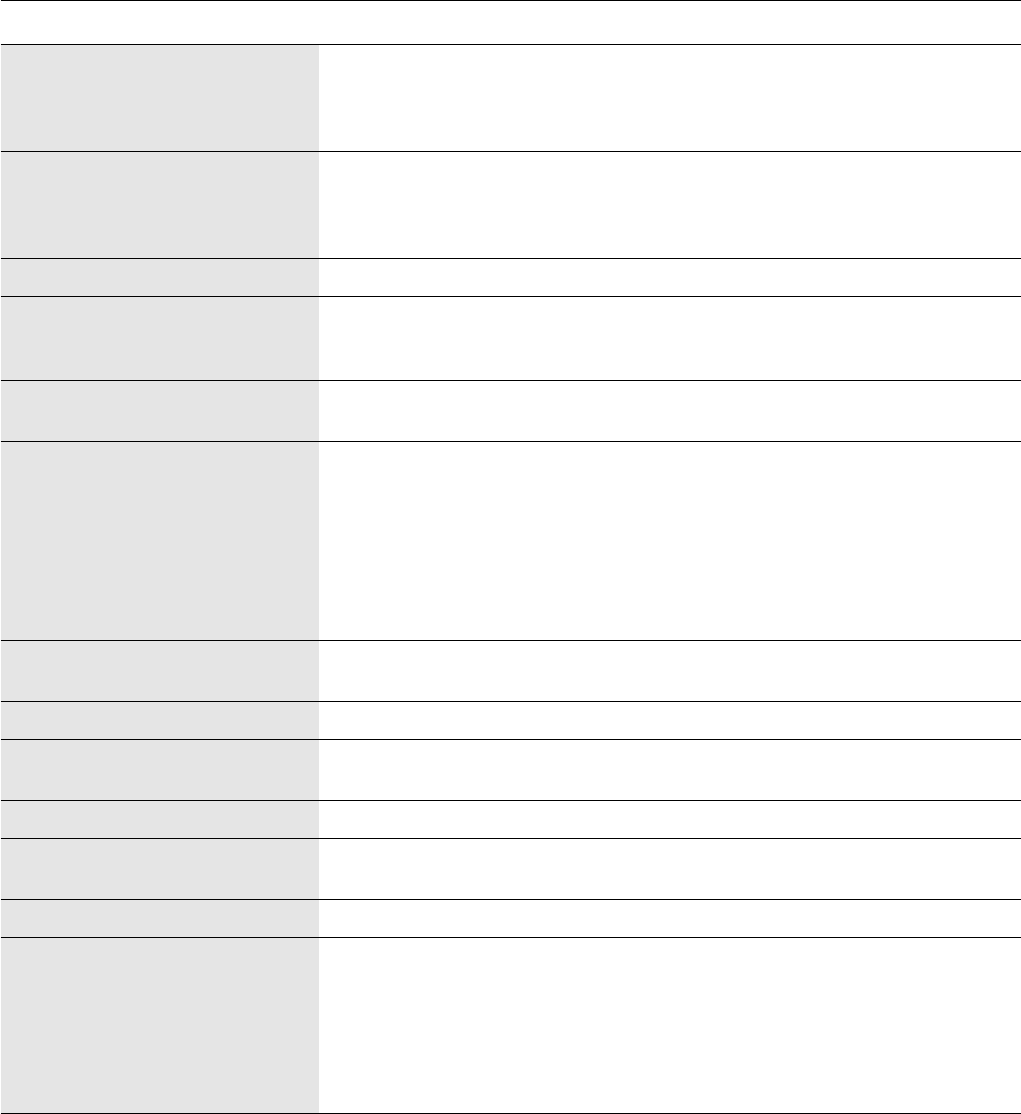
English-12
Specifications
Monitor Specifications MultiSync LCD1770NX Monitor Notes
LCD Module Diagonal: 43.2 cm/17.0 inches Active matrix; thin film transistor (TFT)
Viewable Image Size: 43.2 cm/17.0 inches liquid crystal display (LCD); 0.264 mm dot
Native Resolution (Pixel Count): 1280 x 1024 pitch; 250 cd/m
2
white luminance;
600:1 contrast ratio, typical.
Input Signal Video: ANALOG 0.7 Vp-p/75 Ohms Digital Input: DVI
Sync: Separate sync.TTL Level
Horizontal sync. Positive/Negative
Vertical sync. Positive/Negative
Display Colours 16,777,216 Depends on display card used.
Synchronization Range Horizontal: 31.5 kHz to 81.0 kHz (Analog) Automatically
31.5 kHz to 69.0 kHz (Digital) Automatically
Vertical: 56.0 Hz to 75.0 Hz Automatically
Viewing Angle Left/Right: 80°/80° (CR > 10)
Up/Down: 80°/80° (CR > 10)
Resolutions Supported 720 x 400*
1
: VGA-Text Some systems may not support all modes
640 x 480*
1
at 60 Hz to 75 Hz listed.
800 x 600*
1
at 56 Hz to 75 Hz
832 x 624*
1
at 75 Hz
1024 x 768*
1
at 60 Hz to 75 Hz
1152 x 870*
1
at 75 Hz
1280 x 1024 at 60 Hz to 75 Hz (Analog)..... Recommended resolution is 60 Hz for
1280 x 1024 at 60 Hz (Digital) optimal display performance.
Active Display Area Horizontal: 337.9 mm/13.3 inches
Vertical: 270.3 mm/10.6 inches
Power Supply AC 100-240V ~ 50/60Hz
Power Consumption 36W (typ)
(without optional Sound Bar)
Current Rating 0.7-0.35A
Dimensions 367.0 mm (W) x 362.5-472.5 mm (H) x 198.0 mm (D)
14.4 inches (W) x 14.3-18.6 inches (H) x 7.8 inches (D)
Weight 6.1 kg (13.4 lbs)
Environmental Considerations
Operating Temperature: 5°C to 35°C/41°F to 95°F
Humidity: 30% to 80%
Feet: 0 to 15,000 Feet
Storage Temperature: -10°C to 60°C/14°F to 140°F
Humidity: 10% to 85%
Feet: 0 to 40,000 Feet
*1 Interpolated Resolutions: When resolutions are shown that are lower than the pixel count of the LCD module, text may appear different. This is
normal and necessary for all current flat panel technologies when displaying non-native resolutions full screen. In flat panel technologies, each dot on
the screen is actually one pixel, so to expand resolutions to full screen, an interpolation of the resolution must be done.
NOTE: Technical specifications are subject to change without notice.


















